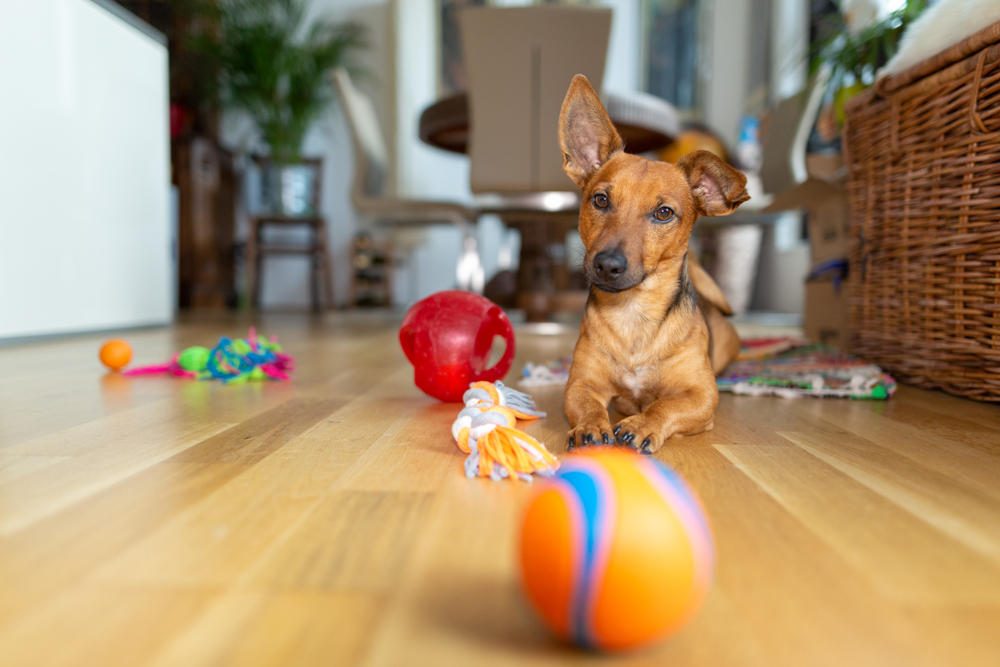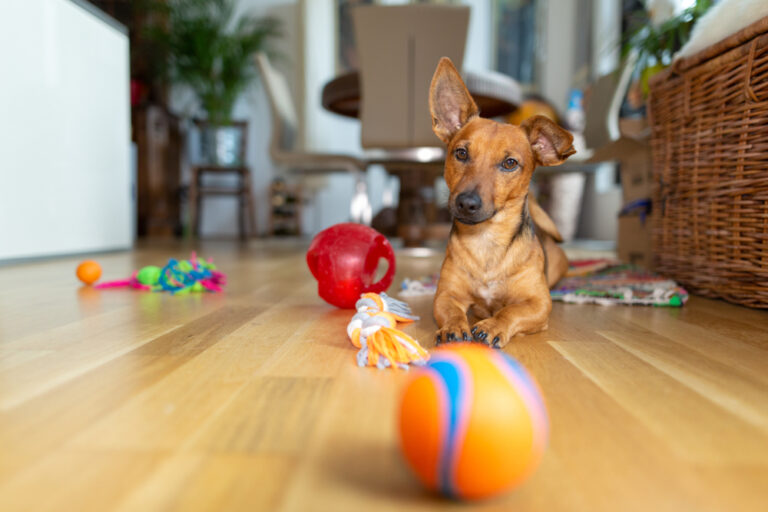Ever wondered why some dog training methods feel like a chore while others spark joy and enthusiasm in both you and your furry friend? The answer lies in understanding the fascinating distinction between game-based learning and gamification in modern dog training. Game-based learning and gamification, while often used interchangeably, are two distinct approaches that can revolutionize how we train our canine companions. The science behind these methods reveals that while gamification adds game elements to traditional training, game-based learning transforms the entire training process into an engaging, natural learning experience. In this comprehensive guide, we’ll explore how these scientifically-backed approaches work in dog training, their unique benefits, and why understanding their differences can be the key to more effective, enjoyable training sessions. Whether you’re a professional trainer or a dedicated pet parent, get ready to discover how these innovative methods can strengthen your bond with your dog.

Understanding Game-Based Learning in Dog Training
Game-based learning has revolutionized the way we approach dog training, making it more engaging and effective for both pets and their owners. This innovative approach transforms traditional training methods into interactive learning experiences that naturally motivate dogs to participate and learn.
Core Principles of Game-Based Learning
In an educational setting, game-based learning focuses on creating structured activities that combine play with specific learning outcomes. When applied to dog training, this method leverages a dog’s natural instincts and desire to play, making the learning process more enjoyable and sustainable.
The approach centers around three fundamental elements:
– Clear learning objectives that guide each training session
– Progressive difficulty levels that build confidence
– Immediate feedback and rewards that reinforce desired behaviors
By incorporating games into training sessions, dogs remain mentally stimulated while working toward specific learning outcomes. This method proves particularly effective because it taps into a dog’s inherent love for play and social interaction.
For instance, a simple game of fetch can be transformed into a structured learning experience by gradually introducing commands and behaviors. This allows dogs to associate training with positive experiences, making them more likely to engage and retain new skills.
The beauty of game-based learning in dog training lies in its ability to create an environment where mistakes are viewed as learning opportunities rather than failures. This approach reduces stress and anxiety often associated with traditional training methods, leading to more confident and well-adjusted pets.
Exploring Gamification in Dog Training
The concept of gamification has revolutionized various fields, including dog training. By incorporating game-like mechanics into training sessions, pet owners can make the learning process more engaging and effective for their furry companions.
Elements of Gamification
Gamification in dog training involves incorporating specific game-like mechanics to enhance the learning experience. The definition of gamification in this context refers to using game design elements in non-game situations to boost motivation and engagement.
A well-designed gamification element typically includes reward systems, progress tracking, and achievement markers. For instance, using a clicker as a marker for correct behavior acts as instant feedback, similar to scoring points in a game. Training apps that track progress and award virtual badges for mastering new commands add another layer of engagement for pet owners.
The key to successful implementation lies in understanding that each gamification element should serve a specific training purpose. This could include breaking down complex behaviors into manageable steps, establishing clear goals, and providing immediate rewards for desired responses.
Modern dog training platforms often incorporate these game-like mechanics through digital tools and traditional training methods. For example, treat dispensers with built-in games combine physical rewards with mental stimulation, making training sessions more enjoyable for both dogs and their owners.
Key Differences Between GBL and Gamification
The fundamental distinction between Game-Based Learning (GBL) and gamification lies in their core approaches, making them truly a different animal in the modern dog training landscape. While both methods aim to enhance learning experiences, they operate through distinct mechanisms and philosophies.
.png?alt=media&token=8acce205-99c7-4451-90df-8d6a6b302033)
Motivational Aspects
In the gbl environment, motivation stems naturally from the inherent enjoyment of playing the game itself. Dogs engage in training activities because they find them genuinely fun and rewarding, much like how puppies learn through play in nature. The learning process becomes seamlessly integrated into the game mechanics, creating an immersive experience where skills are developed organically.
Gamification, on the other hand, applies game-like elements to traditional training methods. It relies more on external rewards such as treats, praise, or point systems to encourage desired behaviors. While this approach has value, particularly for initial engagement, it may not foster the same deep-seated intrinsic motivation that GBL naturally cultivates.
Implementation Methods
The implementation of GBL involves designing complete training exercises that function as games from start to finish. These games incorporate specific learning objectives while maintaining the natural flow of play. For instance, a scent detection exercise might be transformed into an engaging treasure hunt game, where the dog’s natural hunting instincts drive the learning process.
Gamification takes a different route by adding gaming elements to conventional training sessions. This might include creating achievement levels, establishing progress markers, or introducing competitive elements between training sessions. While effective, this approach focuses more on enhancing existing training methods rather than creating entirely new game-based experiences.
Both approaches serve distinct purposes in dog training. GBL excels in developing complex behaviors and problem-solving skills, while gamification proves particularly effective in maintaining motivation during repetitive training tasks. Understanding these differences allows trainers to choose the most appropriate method for specific training goals and individual dogs’ learning styles.
Types of Training Games for Dogs
Physical Games
Traditional game-based learning in dog training often involves interactive physical activities that combine exercise with mental stimulation. These hands-on games create meaningful learning experiences while strengthening the bond between dogs and their owners.
Hide and seek stands out as a serious game that develops recall skills and problem-solving abilities. Start by asking your dog to stay, hide nearby, and call them to find you. This game naturally incorporates training elements while keeping your dog engaged.
Tug-of-war, when played with proper rules, teaches impulse control and the “drop it” command. This types of game-based learning helps establish boundaries while providing physical exercise.
Digital Training Games
Modern technology has revolutionized dog training with innovative digital solutions. Apps and interactive devices offer structured training sessions that adapt to your dog’s progress.
Virtual training platforms incorporate elements of serious game design, using sounds and visual cues to maintain engagement. These digital tools often include progress tracking and customizable difficulty levels.
Many digital games focus on mental stimulation through food puzzles or touch-screen activities. These traditional game elements are reimagined in a digital format, helping dogs develop problem-solving skills while earning rewards.
Some popular digital options include:
– Interactive treat dispensers
– Motion-sensing games
– Sound-based training apps
– Virtual agility courses
Both physical and digital games can be combined to create a comprehensive training program. This balanced approach ensures dogs receive both physical exercise and mental challenges while learning essential commands and behaviors.
Scientific Evidence Supporting Game-Based Training
The integration of games into dog training isn’t just a modern trend – it’s backed by solid scientific research. Multiple studies have demonstrated the effectiveness of incorporating structured play and game elements into training protocols, showing improved learning outcomes and stronger human-animal bonds.
Research Findings
A systematic review of game-based training approaches in animal behavior modification has revealed fascinating insights. Studies conducted at leading veterinary institutions have consistently shown that dogs trained using game-based methods demonstrate higher retention rates of learned behaviors compared to traditional training methods.
Recent linked research from the University of Vienna found that dogs engaged in game-based training sessions showed increased dopamine levels, indicating higher motivation and pleasure during learning. This neurological response creates stronger neural pathways, making the learned behaviors more likely to stick.
Scientists at the Animal Behavior Institute discovered that game-based training sessions resulted in 40% faster learning rates compared to conventional methods. The study also noted reduced stress levels in both dogs and handlers, as measured through cortisol testing.
Additionally, research from the Canine Cognition Center demonstrated that dogs trained through structured games showed greater problem-solving abilities and cognitive flexibility. These dogs were more likely to attempt new challenges and display creative thinking when faced with novel situations.
The scientific evidence extends beyond just learning outcomes. A comprehensive study in the Journal of Veterinary Behavior found that game-based training strengthened the emotional bond between dogs and their owners, leading to better overall training compliance and long-term success rates.

Implementing Game Elements in Training Sessions
Creating Engaging Training Environments
When implementing game elements in dog training sessions, the key lies in crafting an environment that sparks curiosity and maintains engagement. Just like in a classroom setting, the use of educational game principles can transform routine training into an exciting learning adventure.
Start by setting up a dedicated training space that’s free from distractions. This allows your dog to focus solely on the training activities. Incorporate colorful markers, toys, or obstacles that can serve as visual cues and rewards during the training process.
Consider using a variety of training tools that can double as game elements. For instance, treat-dispensing toys can become puzzle challenges, while agility equipment can transform into exciting obstacle courses. These elements not only make training more enjoyable but also help develop problem-solving skills.
Structure your training sessions like mini-games with clear objectives and rewards. For example, create a simple scent work game where your dog needs to find treats hidden under cups. This gamified approach keeps your dog mentally stimulated while reinforcing desired behaviors.
Remember to maintain a positive atmosphere throughout the session. Use an upbeat tone and celebrate small victories. This positive reinforcement creates a strong association between learning and enjoyment, making future training sessions more effective.
Mix up the activities to prevent boredom. Alternate between different games and challenges while ensuring each activity serves a specific training purpose. This variety helps maintain your dog’s interest and prevents training fatigue.
Measuring Training Success Through Games
Progress Tracking Methods
Modern dog training platforms incorporate elaborate systems of experience points and achievement metrics to monitor your pet’s development. These sophisticated tracking methods help both trainers and pet owners understand the effectiveness of their game-based training approaches.
Studies show that over 85 percent use digital tracking systems to monitor progress in dog training programs. These platforms typically measure various aspects of learning, including:
– Task completion rates
– Time spent on specific exercises
– Consistency in command responses
– Behavioral improvements over time
Digital dashboards provide real-time insights into your dog’s learning journey. They help identify areas where your pet excels and those requiring additional attention. This data-driven approach ensures training remains targeted and effective.
Many modern training apps also incorporate visual progress indicators like:
– Achievement badges
– Level progression charts
– Skill mastery meters
– Performance trend analysis
These tracking tools not only motivate pet owners but also help maintain consistent training schedules. The ability to see tangible progress encourages continued engagement with the training program.
Advanced platforms even offer comparative analytics, allowing you to benchmark your dog’s progress against similar breeds or age groups. This feature helps set realistic expectations and adjust training methods accordingly.
Regular progress monitoring through these game-based systems ensures training remains engaging while delivering measurable results. It transforms traditional dog training into a structured, goal-oriented process with clear milestones and achievements.

